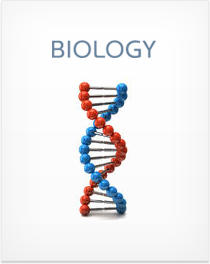Basic Chemistry, Organic Molecules and Enzymes
This section covers the following topics
- The Laws of Thermodynamics and why they are important for biology
- The unique properties of water
- The pH scale
- Organic molecules, including carbohydrates, lipids, nucleotides and proteins
- Enzyme structure and function
Section Summary
The Laws of Thermodynamics provide an explanation for why things happen, from pencils falling to the table to the movement of electrons. In short, objects always attempt to occupy the lowest energy position possible. Movement involves a conversion of potential energy to kinetic energy, although some energy is lost as heat or entropy. Reactions where energy is released are called exergonic, while reactions requiring an input of energy are said to be endergonic.
Water molecules contain oxygen, which is highly electronegative and makes water polar. Polarity allows water molecules to form hydrogen bonds with each other, a tendency which gives water the unique properties of cohesion, high surface tension, high specific heat and its ability to dissolve polar substances.
The pH scale is a measure of the relative H+ and OH- concentrations in a solution. pH is measured on a logarithmic scale. Solutions with very low pH are acidic, while high pH solutions are basic.
Carbohydrates are composed of individual glucose or fructose molecules called monosaccharides, which can be joined to form disaccharides by a dehydration reaction. Long chains of sugars are called polysaccharides or starches.
Lipids or fats are non-polar molecules. Indivual fatty acids are high-energy molecules that can be either saturated or unsaturated based on the presence of double bonds. Phospholipids, which make up the cell membrane, and steroids are both examples of lipids.
DNA and RNA nucleotides store genetic information in cells, and consist of a 5-carbon sugar, a phosphate group and a nitrogen base. DNA and RNA nucleotides are identical except for the presence of an extra oxygen atom in RNA.
Proteins are composed of amino... Sign up to continue reading Basic Chemistry, Organic Molecules and Enzymes >
